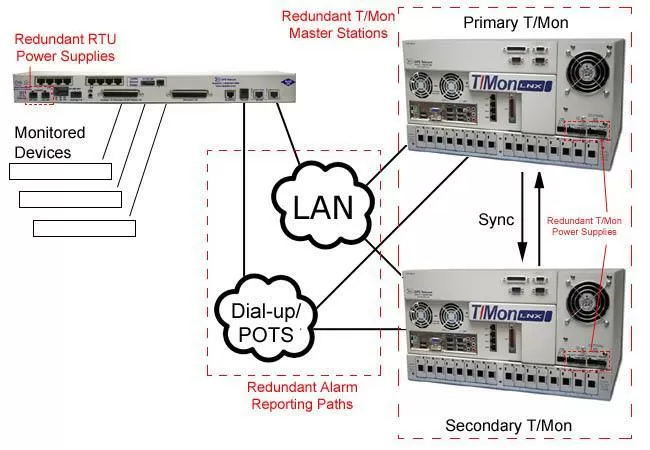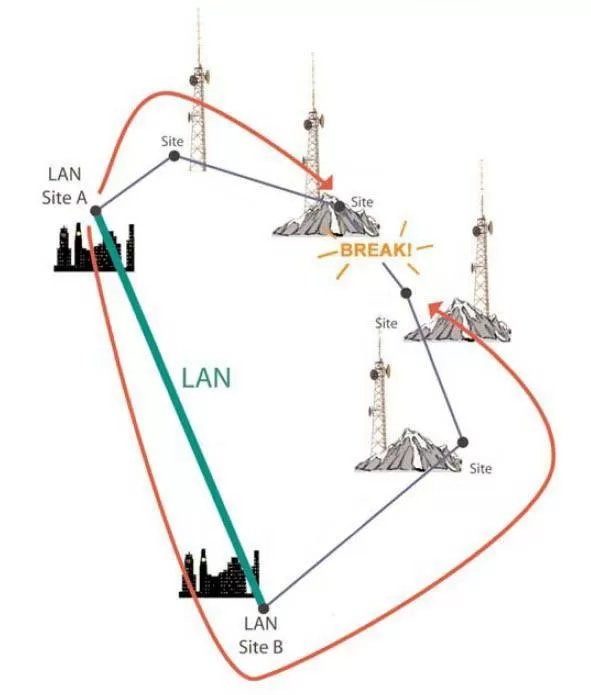The Top 5 Ways to Comply with Redundancy Regulations and Improve Your Service Reliability
If you've ever been the victim of a preventable network outage, then you know just how costly they can be. Every minute that your network is down, you're burning through cash. You need to ensure that your network is online at all times, and the single best way to do so is to add layers of redundancy throughout your network.
If you're a utility company, then you're likely interested in satisfying NERC requirements or other regulatory mandates. Under these regulations, all of your critical systems must be redundant. By adding redundancy to your remote monitoring infrastructure, you'll enjoy improved network reliability and satisfy NERC regulations.
By having dual-redundant devices for your remote monitoring, you won't lose visibility after a simple RTU or master station failure. If your network monitoring fails, then you're completely blind to any potential problems across your network. This is unacceptable.
Here are 5 ways to add redundancy to boost your network's reliability: - Dual Power Supplies - By deploying devices that feature two separate sources of power, you're guaranteeing that losing one source of power won't bring down your network monitoring system. Don't be fooled, however, by monitoring gear that has dual power routed through a single fuse. By only having one fuse, this creates a single point of failure. Choose only monitoring devices that have dual power inputs AND dual fuses.
- Dual Master Stations - If you're using a central master station (like T/Mon LNX) to centralize your alarm monitoring, then you should have a backup T/Mon in case of an emergency. If something were to happen to your primary T/Mon (natural disaster or another source of damage), your network will be exposed and at risk until you can get your alarm monitoring back online.
By using the T/Mon NRI software module, you'll be able to sync a primary and secondary T/Mon master station. This way, if something takes your primary T/Mon down, your secondary T/Mon will be synced up and "on the same page." With NRI, the secondary T/Mon takes over monitoring within seconds of a primary T/Mon failure. You won't have to acknowledge recent alarms again after your backup takes over monitoring - the transition will be seamless.
Some DPS clients have even deployed two T/Mon master stations and placed them thousands of miles apart - on opposite sides of a national network. This way a hurricane or a serious flood won't take out both of their master stations.
 By using redundancy throughout your network, you'll be able to achieve greater levels of reliability - which means reduced downtime and much happier customers.
By using redundancy throughout your network, you'll be able to achieve greater levels of reliability - which means reduced downtime and much happier customers. - Multiple Alarm Reporting Channels - You need a reliable and guaranteed way to transport your alarms across your network. If you're only relying on a single transport method, then your network is exposed to an outage. Whether you're transporting over LAN, fiber, dialup, serial, or wireless, only having one method of reporting your alarms means you have a single point of failure.
To avoid the risks associated with a single point of failure, you'll want to make sure that the devices reporting to your central office have multiple means of reporting. Having redundant data transport means that in the event your primary connection path goes down, you won't lose visibility of your entire network.
For example, you have LAN as your primary transport at one of your remote sites and GSM wireless as the backup reporting path. If your LAN connectivity were to go down, you wouldn't lose visibility of the site, because you would still be able to report wirelessly. Protect your network monitoring by having the dual reporting paths you truly need for adequate reliability. - Escalation Call Lists - What would happen if one of your remote telemetry units (RTUs) were to send an email notification to one of your technicians? If your technician happened to be busy and didn't notice the email notification, it would just sit there until you have a serious network emergency on your hands. With the ability for your devices to report to multiple people, you can protect yourself against situations like these.
You'll want your reporting devices to feature escalation lists. An escalation list will allow your monitoring device to report alarms to multiple people. This way, if the first person notified can't respond to the alarm, then the next person will be notified, and so on. This helps protect against someone being too busy or distracted from ignoring a critical alarm.
For example, let's say you're using an RTU to monitor the temperature of your server room. One evening, your HVAC units fail and the temperature steadily begins to rise. An alert goes out to your technician Fred, but he's deep asleep and doesn't hear his phone. After 5 minutes (or however long you specify) go by and the alarm hasn't been acknowledged, your RTU will then alert Bill. With an escalation list, you know that someone will eventually receive the notification and respond. - Ring Polling - With a T/Mon master station and a ring network of sites, you can use ring polling to still connect with your devices via transporting backwards through your network. If your sites are numerically labeled in your T/Mon database, your T/Mon can poll these devices going either direction throughout your ring of sites (1, 2, 3, etc. or 6, 5, 4, etc.). If your signal is broken between sites 2 and 3, you'll be able to access site 3 by traveling backwards from site 6.
If your network is assembled with straight paths connecting to your T/Mon, then if your primary transport goes down then you won't be able to connect to that site (without a backup data transport). By using ring polling, if your connection breaks, you can poll your network in both directions to pinpoint the cause of the break. This means you can respond quicker and get your entire network back online.
 Ring polling can help you achieve better visibility throughout your network by allowing you to connect to devices from two different paths. If your transport breaks, you'll be able to poll from the opposite direction over your ring network.
Ring polling can help you achieve better visibility throughout your network by allowing you to connect to devices from two different paths. If your transport breaks, you'll be able to poll from the opposite direction over your ring network. Learning More About Redundant Network Monitoring
You likely already see the benefits of having redundant systems in your network. Your network will be more reliable and spend more time online when redundant precautions are taken. Think of how happy and satisfied your customers will be. By adding redundancy to your critical systems, you're sending a clear message to your customers that you're a proactive company that isn't willing to cut corners.
If you want have questions about redundant network monitoring or want to learn more ways you can improve your network reliability, then call the DPS experts at 1-800-693-0351 or email them at sales@dpstele.com.


